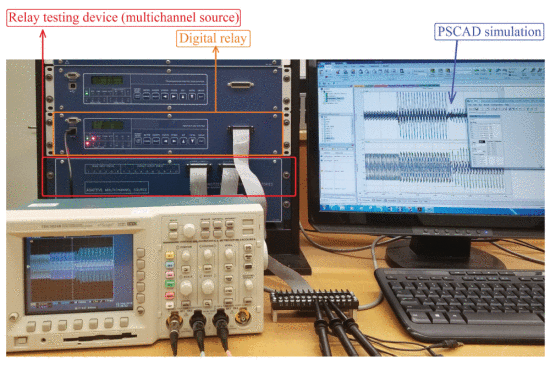Non-Pilot Protection of the Inverter-Dominated Microgrid.
Without utilizing costly communication systems, the existing protection strategies fail to reliably detect the occurrence and direction of faults in the inverter-dominated microgrid.
Paper Overview
In order to address this issue, this paper introduces a selective and reliable non-pilot protection strategy. It addresses the the inverter-dominated microgrid. In fact, the proposed protection strategy does not require communication signals. It incorporates phase- and sequence-domain protective elements for reliable detection of symmetrical and asymmetrical faults. Furthermore, it improves the existing sequence-domain directional elements. In particular, it effectively utilizes them for accurate determination of the fault direction.
Of course, this happens in the presence of inverter-interfaced distributed energy resources. In addition, it selectively protects the inverter-dominated microgrid against internal and external faults. Finally, it is robust against the grid-connection mode of the microgrid, and enables fuse protection of laterals and non-critical circuits.
The acceptable performance of the proposed protection strategy is verified through comprehensive fault studies. They were conducted on a realistic study system simulated in the PSCAD/EMTDC software environment. This paper also demonstrates that the proposed protection strategy can serve by using an off-the-shelf digital relay.
Microgrid Key Points
The proliferation of the alternating current (AC) microgrid holds down because of the lack of a cost-effective, selective, and reliable strategy for its protection against faults. The protection strategies used in traditional distribution networks are not generally applicable to microgrids. The protection challenges are further complicated in the inverter-dominated microgrid to which the majority, if not all, of the distributed energy resources (DERs) are interfaced through inverters. The issue is threefold.
First, the conventional over-current (OC) relays may fail to detect the limited fault currents contributed by the inverter-interfaced DERs (IIDERs). Second, coordinating the OC relays in the inverter-dominated microgrid is challenging, due to the significantly different fault current levels under the grid-connected and islanded operation modes. Third, the conventional phase- and sequence-domain directional elements fail to accurately determine the fault direction in the inverterdominated microgrid. This happens under specific operating conditions, as demonstrated in this paper.
Different microgrid protection strategies are in place in order to address these issues.




